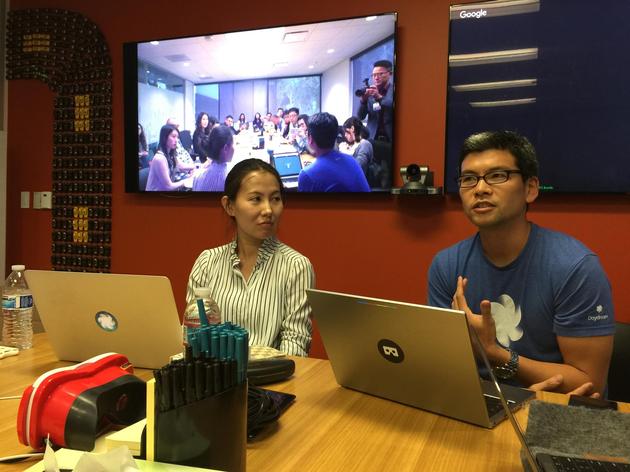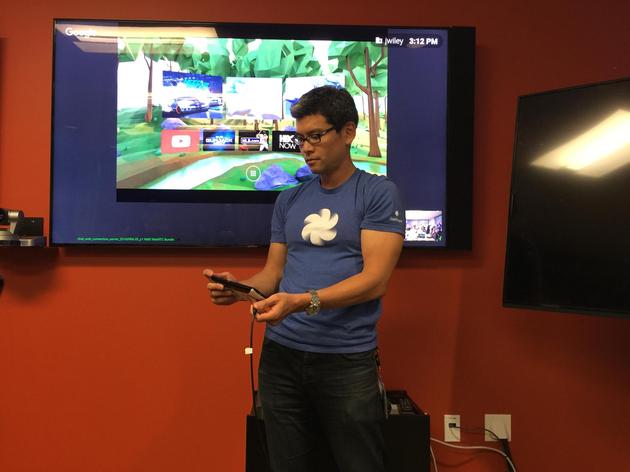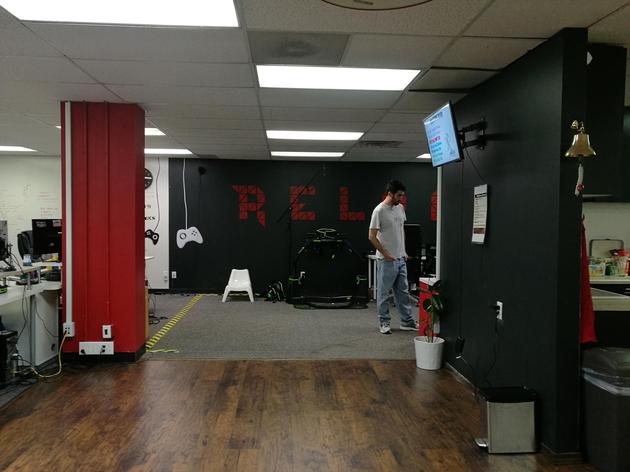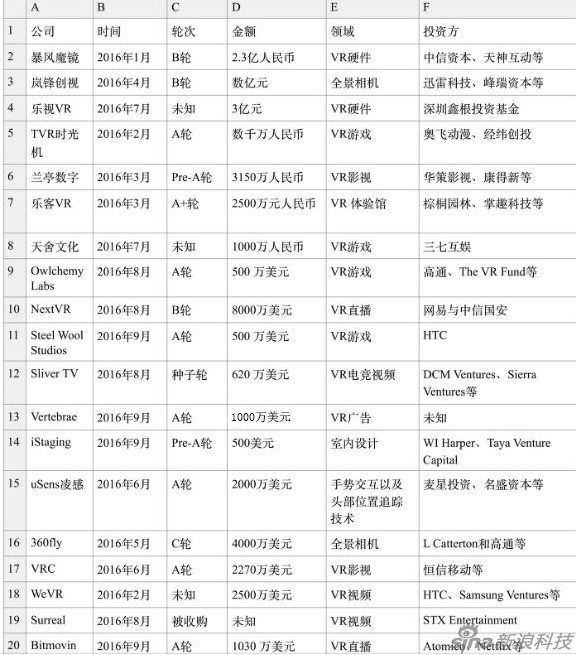After the first year of VR, the Chinese market quickly began to discuss whether VR is in a cold wave. Entrepreneurs and investors have sent a lot of negative signals.
Last year, I met a lot of VR entrepreneurs. At the time, they gave people the feeling of being almost the same. The constant spread of tens of millions or even billions of dollars of financing, the entry of large companies into the code, the media's hot speculation, let the entrepreneurs feel that they are standing in the future.
But when they come into contact with these entrepreneurs again this year, they are no longer plans to open up and occupy the market, but how to survive, squat, and whether they can live to the end of the year. Some investors even admit that they have not looked at domestic VR projects and are very cautious about watching VR startups.
For this trend of turning the ice, some people think that the bubble is inevitable, but some people think that the Chinese market lacks patience and short-sighted performance.
Last week, at the invitation of Geek Park, Sina Technology and Tencent founder Zhidong, public comment founder Zhang Tao and several domestic startup CEOs came to the United States for a 7-day Innovator Alliance overclocking trip, VR It is one of the key research directions this time.
From Google to NVIDIA, to VR content startups, unlike China’s cold, the United States, where VR entrepreneurship originated, is more like the eve of waiting for an outbreak.
Different attitudes of Apple and Google
Unlike China, VR startups in the United States are mostly concentrated in the content field. In the early days, there were Oculus VR, a hardware system startup company, but now that large companies have entered the market, entrepreneurs have almost abandoned the field. Entrepreneurship, "hard hit" is not the practice of smart entrepreneurs.
Facebook bought Oculus VR for $2 billion, Samsung launched Gear VR, HTC released HTC Vive, and Sony's first VR product, PS VR, will be available next month, but VR is still a bit far from the mass market.
In this case, as the two promoters of the development of smart phones, Google and Apple's actions in the field of VR are more concerned.
Apple is still working hard, waiting for the market to mature, the product launch is to change the industry's route. In 2014, the media broke the news that Apple was looking for VR-related App engineers and hired VR academic leaders, Doug Bowman, director of the Virginia Tech Human-Computer Interaction Center, and also hacked many research scientists from Oculus.
But Apple seems to be more interested in AR on VR and AR. In an interview with the US media, Cook said that AR will be the main direction of Apple's future efforts, and VR uses the phrase "this technology may also be enabled in the future." Apple's many investments in the AR field confirm this.
This makes Google even more important. Cardboard, a mobile VR device launched by Google, is already a VR device template for many Chinese VR entrepreneurs, mobile phone manufacturers and cottage manufacturers. At this year's I/O conference, Google announced that it will launch a new VR platform, Daydream, which is clearly going to be a step closer in the VR space.
"Daydream" waiting for an outbreak
According to foreign media reports, Google Daydream platform and VR head display are likely to be officially launched at the hardware conference on October 4. The market's point of view and expectation is that Daydream is an important step for VR to go to the mass market.
During this overclocking trip, we also communicated with the Google Daydream team.

They are very sure to tell Sina Technology that VR is a very important business direction for Google. The next 5 to 10 years is also the focus of Google's investment. This is not a small experiment for Google, but a real investment. Things to do.
"VR is the computing platform of the future. Like the mainframe, notebook, etc., it is an inevitable trend in terms of information input. More and more people believe that VR will be a new platform, but now VR devices are not Very intuitive to meet the human feeling."

Cardboard has played a role in the education market. The low cost and production method have enabled more people to quickly know what VR is, but the low-end display also brings harm to the VR market. Oculus VR, Gear VR, HTC Vive, etc., although better display, but exclusive and expensive prices become a natural barrier.
In the era of mobile Internet, Android system helped mobile phone manufacturers build a bridge to smart phones at the lowest cost and fastest speed. Google also has great ambitions in the VR field, this time they still plan to take the same wolf route as Android.
"After the cardboard, we need to greatly enhance the experience of VR, so that users can stay in VR for a longer time. We will provide a set of standards and requirements for mobile phone manufacturers to adapt, integrate SDK, let development Better call Daydream's capabilities and standards," said the head of the Daydream team.

According to them, there will be some Daydream standard mobile phone releases this year, including Google’s own, and partners, and there will be more Daydream-based hardware and content next year. From 2016 to 2017, most OEMs will embed Daydream. In addition to the mobile phone, it will also introduce a better head display than the cardboard experience, as well as the controller, a third party certified by Google can launch related hardware.
Content entrepreneurship
The United States is mainly focused on content in the VR field, with teams from film and games. The LOOM.AI, Survios, and Reload Studios we saw in the US are typical representatives.

The founding team of LOOM.AI comes from the industrial light magic and dream factory in the Hollywood special effects factory. The product only needs a positive face photo taken by a mobile phone, so that a highly simulated 3D face model can be generated on the mobile phone for the user in real time. And this process takes about 20 to 30 seconds. The current application scenarios are mainly focused on the production of VR content.
Reload Studios is made up of the elders of the IW of the Call of Duty series. The latest good news is that Survios announced that their 3A-level VR game "Raw Data" has become the world's first consumer-grade VR game that sold for $1 million in a month.

According to NVIDIA, VR has to achieve 7 times performance improvement, picture and sound synchronization, interaction with the environment, and compliance with changes, users enter the VR world is real. The VR game DEMO provided by NVIDIA also brings a lot of surprises. In the game, not only the sound synchronization, but also hair, explosion, stickiness, debris, trajectory, smoke and other effects can be achieved.

However, most of the VR games are based on the PC-side VR. As far as the experience is concerned, the biggest problem is probably the cumbersome hardware and the control of the line. Advances in wireless transmission technology, getting rid of the control of the line, may be an important breakthrough point of VR. Several VR startups are predicting that Sina Technology may have explosive growth next year or later.
In terms of mobile VR, in addition to hardware, content, games and channels, Google is also working hard to create a recycling ecosystem. It can be said that Google is currently the most powerful manufacturer and the most likely to push VR to the mass market. And has been successful on Android once. If Google is successful again in the VR field, it may not be a good thing for Chinese VR entrepreneurs. It may be that hardware and content entrepreneurship are welcoming a real turn.
A list of important investments in the VR sector in 2016:

Guiding Cable,Screen Type Guiding Cable,Screen Guiding Cable,Copper Wire Shield Guiding Cable
Baosheng Science&Technology Innovation Co.,Ltd , https://www.bscables.com